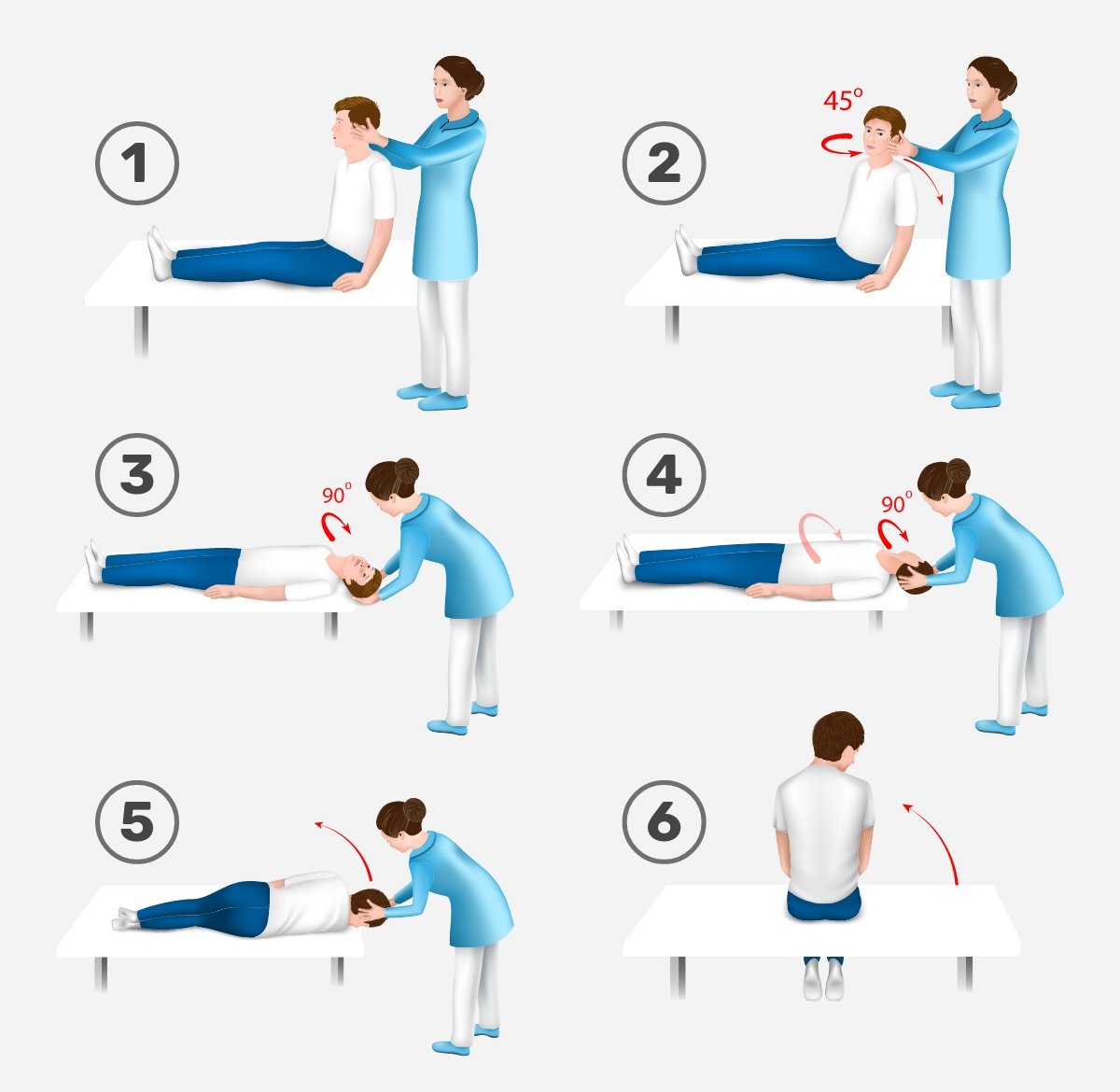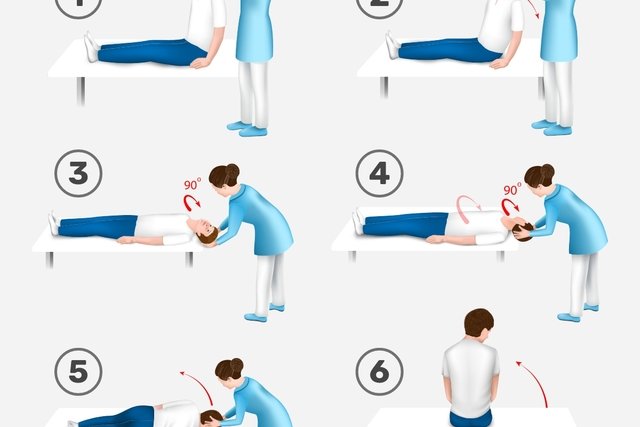The Epley maneuver is a technique used to reposition calcium carbonate crystals within the inner ear, indicated for the treatment of benign paroxysmal positional vertigo, which is caused by the displacement of these crystals within the semicircular canals.
This technique is performed by the otorhinolaryngologist or general practitioner through a series of movements with the person’s head, which quickly relieves symptoms of intense dizziness, the sensation of everything spinning around or loss of balance. Check out all the symptoms of benign paroxysmal positional vertigo.
After performing the Epley maneuver, some precautions are important, such as resting, avoiding sudden movements of the head and avoiding sleeping on the side where the crystals were displaced. In addition, you should consult your doctor again if your vertigo symptoms reappear.

What is it for
The Epley maneuver is indicated for the treatment of benign paroxysmal positional vertigo (BPPV), which is caused by the displacement of calcium carbonate crystals in the semicircular canals within the middle ear.
When performing this maneuver, the doctor repositions these crystals in the inner ear, relieving symptoms of intense dizziness, vertigo, loss of balance or the sensation of everything spinning around.
Make an appointment with an otolaryngologist in the nearest region:
Taking care of your health has never been easier!
How it is made
The Epley maneuver is performed by the otorhinolaryngologist or general practitioner, in the office, following a few steps:
- Place the person seated on the stretcher, with legs stretched out. The doctor must be positioned behind the person to perform the movement of turning the head at a 45-degree angle, towards the affected ear;
- Quickly lay the person on their back with the head hanging over the edge of the stretcher, with the head 20 degrees lower than the stretcher and still at a 45 degree angle. Maintain this position for 30 seconds;
- Rotate the person’s head to the other sidealso in a 45-degree position, also maintaining this position for 30 seconds;
- Ask the person to turn their body to the same side that the head is positioned, so that the ear is parallel to the floor. Maintain this position for 30 seconds;
- Ask the person to turn their entire side of the body and headso that you are looking at the floor and remain in that position for 30 seconds;
- Help the person return to a sitting positionwith the head still turned to the same side, maintaining this position for another 30 seconds;
- Rotate the person’s head to the normal positionforward, and remain still with your eyes open for a few more seconds.
During the procedure, the doctor must observe eye movements and, in some cases, medication for nausea and vomiting may be used before carrying out the maneuver, as nausea or vomiting may occur.
Can you do the Epley maneuver alone?
It is not recommended to perform the Epley maneuver movements alone, because the head movement must be performed passively, that is, by another person.
However, there are some techniques and exercises that can help relieve dizziness and vertigo at home. See how to relieve dizziness and vertigo at home.
Care after the Epley maneuver
After the Epley maneuver, some precautions are important, such as:
- Rest;
- Avoid making sudden head movements or sudden changes in position, especially when sitting or standing up;
- Avoid bending forward or sideways for the rest of the day after the maneuver;
- Avoid sleeping on the side where the crystals have moved, for a few days, as advised by your doctor;
- Avoid driving or operating heavy machinery.
Generally, after the Epley maneuver, vertigo symptoms improve within a few minutes, however, if it does not improve or the vertigo worsens, you should see a doctor.
Possible complications
The main complication of the Epley maneuver is the impossibility of performing the technique due to the person’s intolerance to rapid head movements during the procedure, which can cause intense vertigo.
Furthermore, during the maneuver the person may experience nausea or vomiting, which is why it may be necessary to use antiemetic medications, such as ondansetron or promethazine before the procedure.
Who shouldn’t do
The Epley maneuver should not be performed on people who have had retinal detachment, stroke, transient ischemic attack, serious neck illness or injury, or recent surgery or fractures in the cervical spine.
Furthermore, this maneuver should also not be performed in cases of a murmur or narrowing of the carotid artery or unstable heart disease.

Sign up for our newsletter and stay up to date with exclusive news
that can transform your routine!
Warning: Undefined array key "title" in /home/storelat/public_html/wp-content/plugins/link-whisper-premium/templates/frontend/related-posts.php on line 12
Warning: Undefined array key "title_tag" in /home/storelat/public_html/wp-content/plugins/link-whisper-premium/templates/frontend/related-posts.php on line 13




